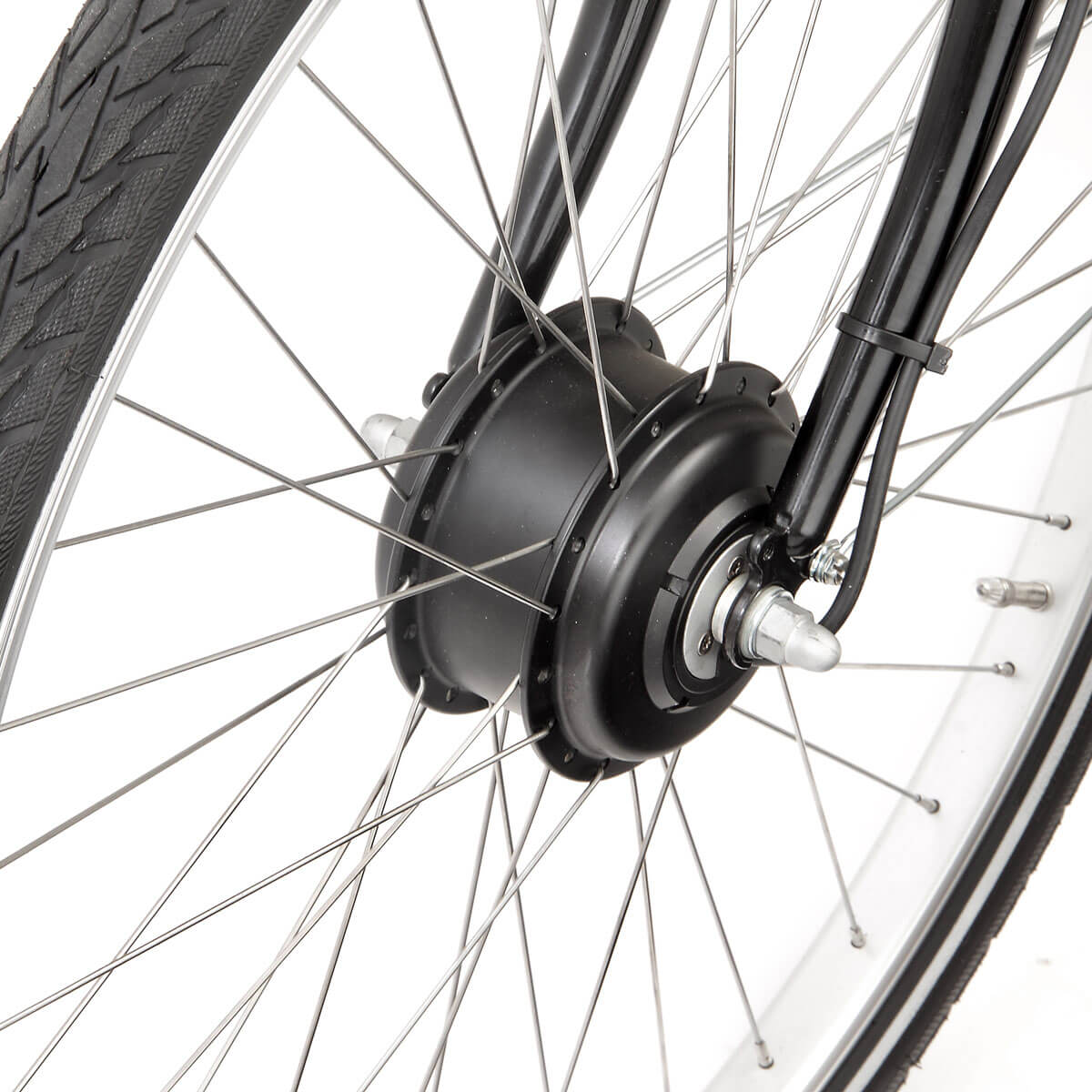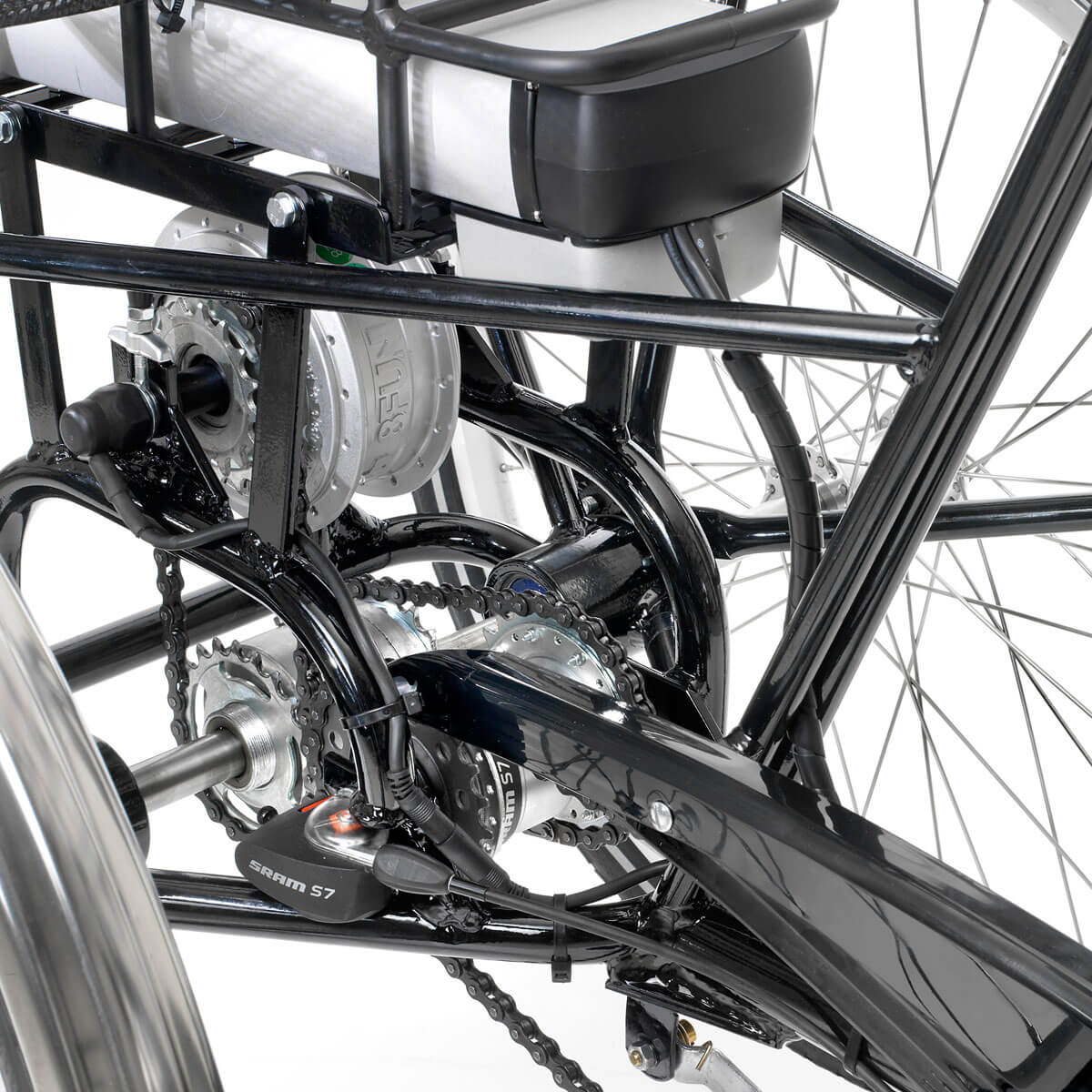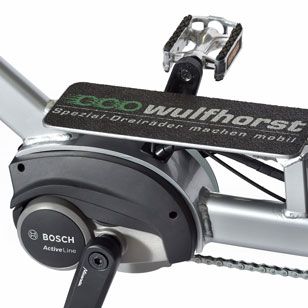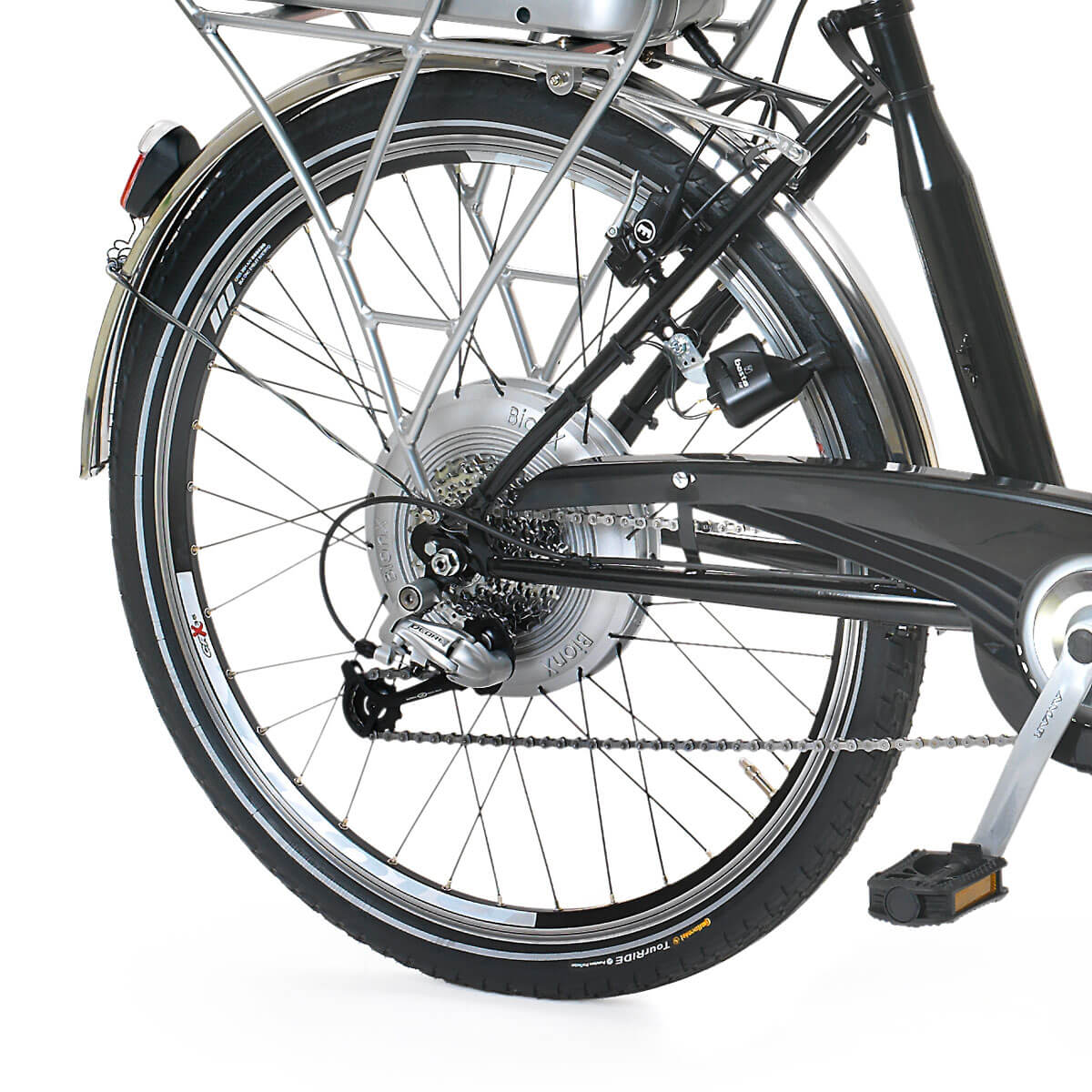Our different types of electric motors for electric bikes
Have your ever driven a Wulfhorst electric tricycle or bike? It’s an indescribable feeling when you apply pressure to the pedals and glide away effortlessly and quietly. Enjoy the flow of the air as nature passes by you.
The main task of the electric motor is to give you unnoticeable support when your power happens to lapse for a little while. You set the tempo, while the motor assumes part of the pedalling work for you. And as a welcome side effect, it’s also unbelievably fun.
Distances great and small can be mastered with little effort, even with head winds or when going uphill. The way to the market or a leisurely drive in nature is no longer a challenge. This is unburdened, environmentally friendly mobility that means more joy in cycling and in living.
And even the cost-performance balance is convincing. With approx. € 0.10 per 100 km, you can outdo any car while remaining eco-friendly. Don’t wait to enjoy the mobility of the next generation.
Wulfhorst electric bikes are not designed for individual cycling groups, but rather specially for you. Select the right bike for your personal needs and choose from different types of electric motors. Select from our large range of models or put together your own custom tricycle. We manufacture our products exclusively in Germany and can realise virtually all of your wishes.
Our electric bikes are available in two variants:
Variant 1: Liable for insurance
The switchable electric motor can be used independently of pedalling operation at up to 15 km/h. The range permitted without pedalling is approx. 20 km. However, a triangular warning sign on the rear and a number plate are required. No license and helmet required. The quiet-running, switchable electric motor can be activated at any time independently of pedalling. When the battery is empty, it is simply recharged with the charger included.
Variant 2: Exempt from insurance
The electric motor is also available as a pedal-assist motor (Pedelec). The switchable motor switches on whenever the pedals move, thereby assuming half of the pedalling work. In addition, a turning handle on the handlebars can be used to regulate the power contribution from the motor continuously. At up to 6 km/h, the motor maintains the speed without pedalling.



